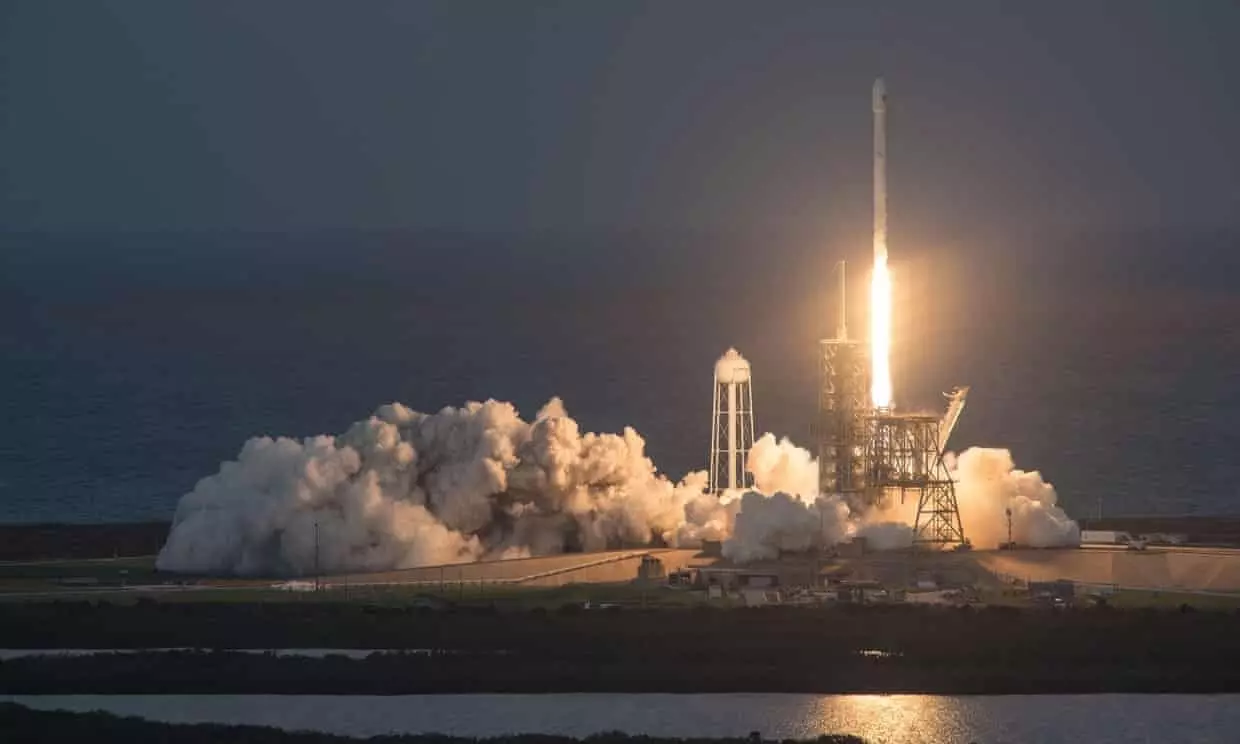
Space X's junk, wandering in space for 7 years, heads to hit Moon
text_fieldsRepresentational image only
Washington: Astronomers tracking space junk on Wednesday said that a chunk of a SpaceX Falcon 9 rocket is likely to crash into the Moon in March.
The abandoned booster has been drifting in space for seven years, but it is now headed for an impact.
The rocket was deployed in 2015 to put into orbit a NASA satellite called the Deep Space Climate Observatory (DSCOVR).
According to Bill Gray, the owner of projectpluto.com who first reported the upcoming crash in a blog post, the impact is likely the "first unintentional case" of a human object hitting the moon.
It was Gray who calculated the space junk's new collision course with the Moon.
The booster passed quite close to the Moon in January in a rendezvous that altered its orbit, said Gray.
He is behind Project Pluto, software that allows for calculating the trajectory of asteroids and other objects in space and is used in NASA-financed space observation programs.
A week after the rocket stage whizzed close to the Moon, Gray observed it again and concluded it would crash into the Moon's dark side on March 4 at more than 5,500 miles per hour (9,000 kilometers per hour).
His conclusion was confirmed after amateur astronomer community joined him in observing the booster.
Although, the exact time and spot of impact may change slightly from Gary's forecast, there is widespread agreement that there will be a collision on the Moon that day.
India's Chandrayaan-2 orbiter and NASA's Lunar Reconnaissance Orbiter that are currently orbiting the Moon face a threat as the debris might end up colliding with them. However, an astrophysicist from Harvard University, Jonathan McDowell, has claimed that the rocket moving towards the Moon is not a big deal.
He also affirmed that there's no cause for panic.
According to McDowell, there are at least 50 objects that were left in deep Earth orbit in the '60s, '70s and '80s that were just abandoned and never tracked.
"Now we're picking up a couple of them... but a lot of them we're not finding and so they're not there anymore," he added. "Probably at least a few of them hit the moon accidentally, and we just didn't notice."
The impact of the SpaceX rocket chunk weighing four tons on the Moon will not be visible from Earth in real time.
Gray said there could be more unintentional crashes into the Moon in the future as the US and Chinese space programs in particular leave more junk in orbit.
McDowell noted these events "start to be problematic when there's a lot more traffic."
"It's actually no one's job to keep track of the junk that we leave out in deep earth orbit," he added. "I think now's the time to start regulating it."
SpaceX did not immediately respond to request for comment from AFP.























